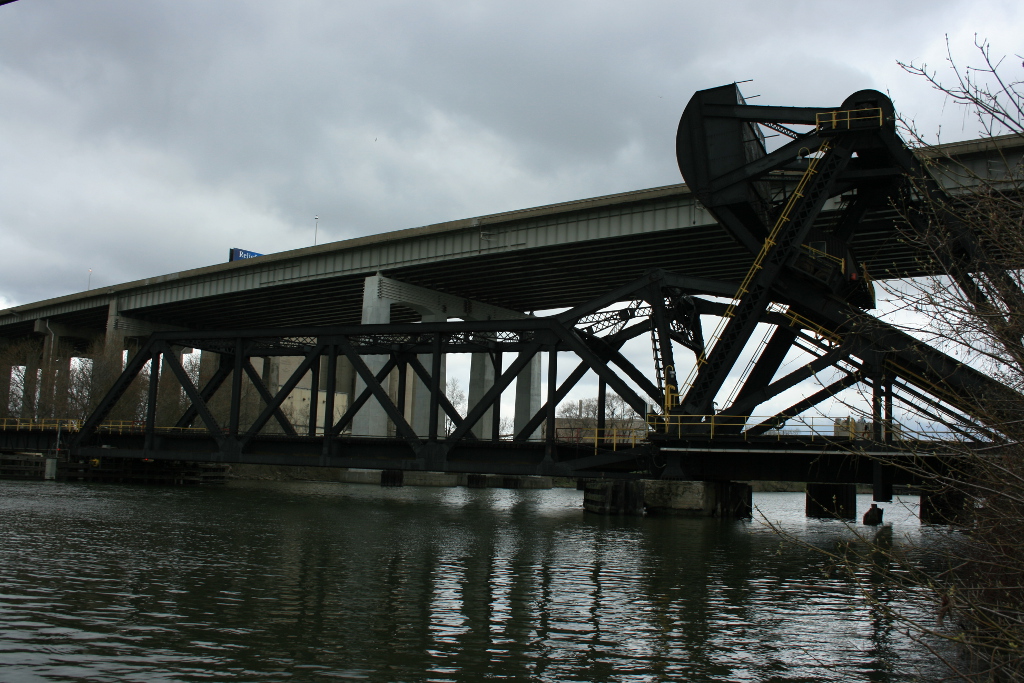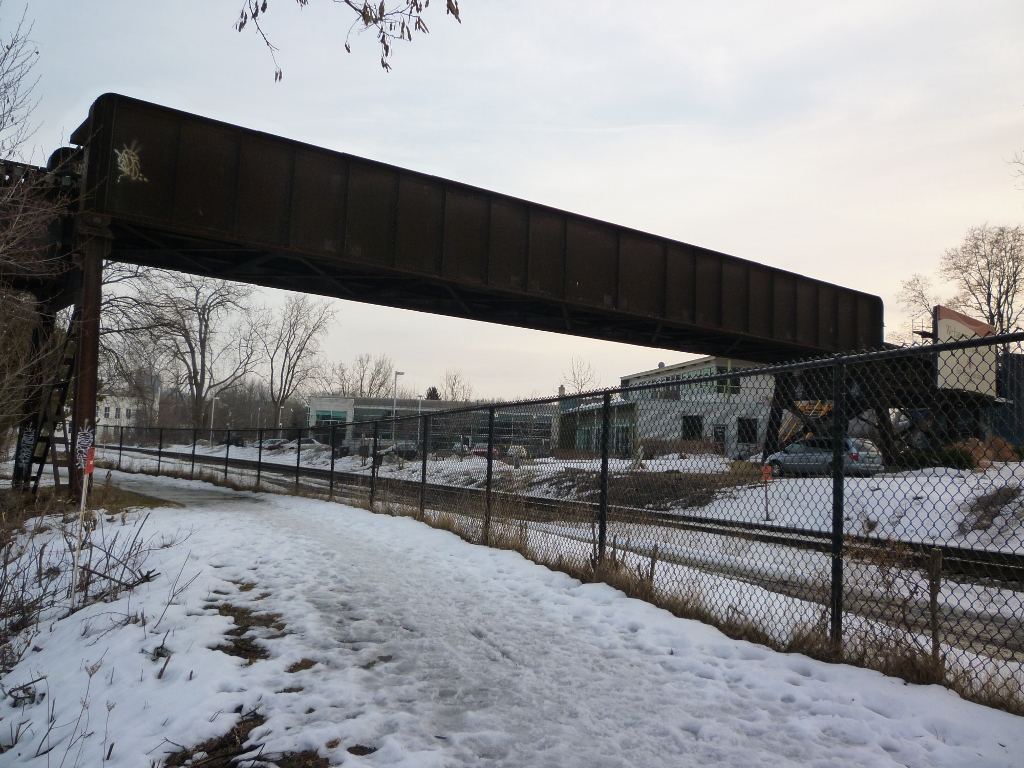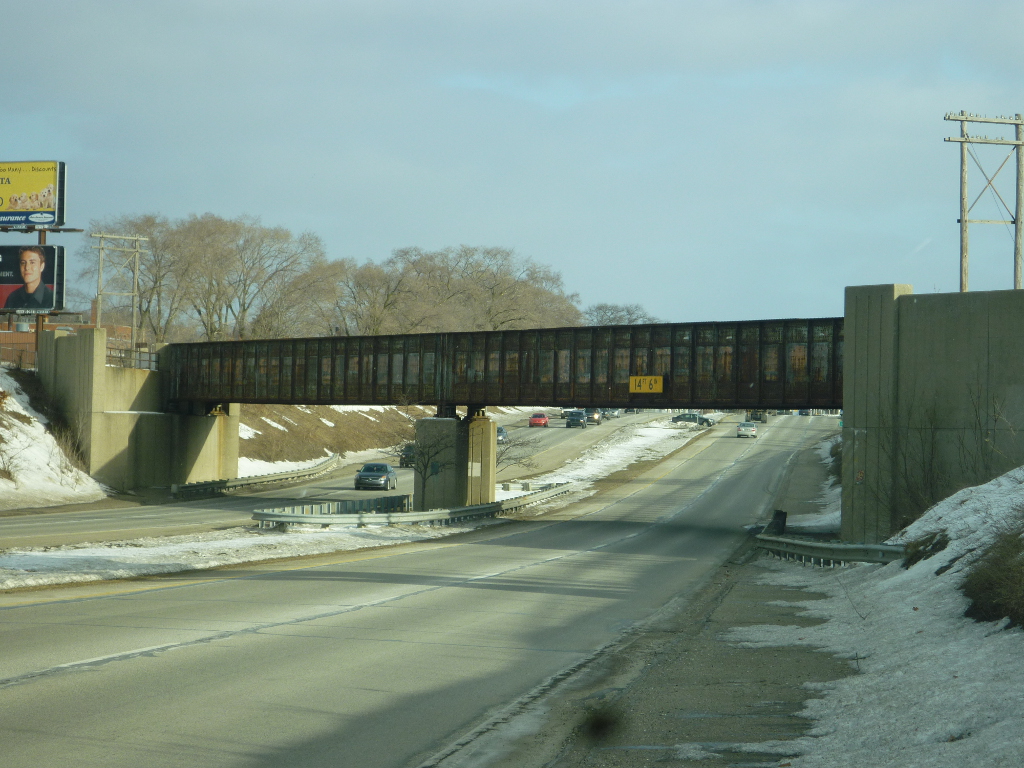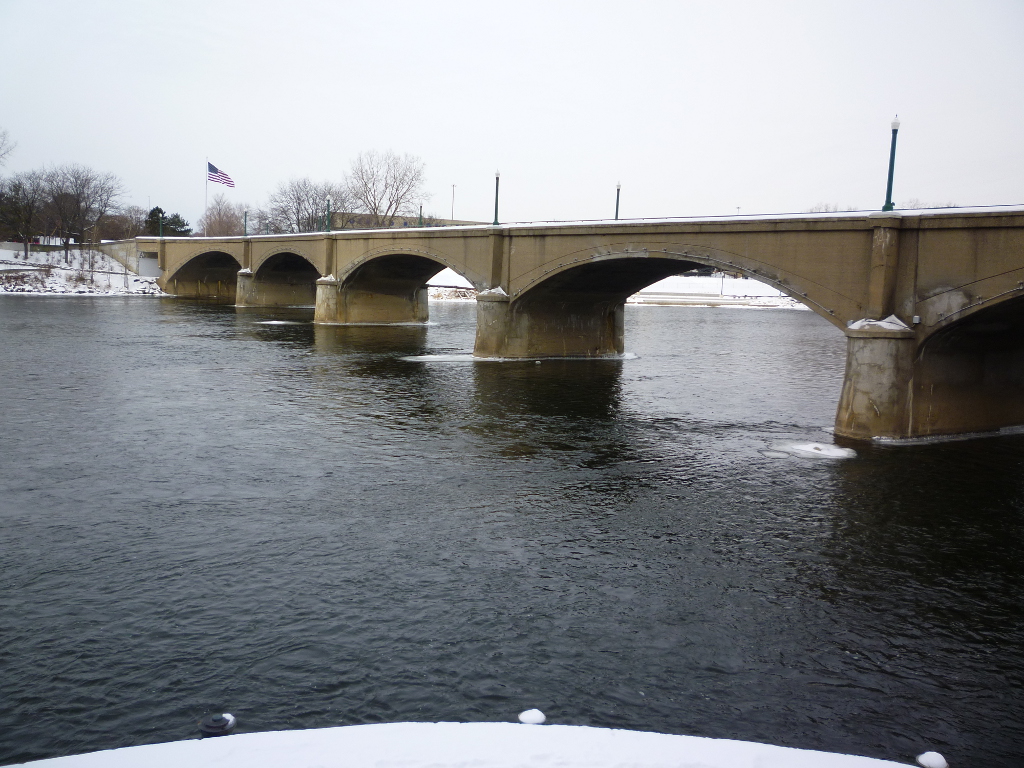
Photo Credit: Alex Mead
Featured today is a bascule bridge, often called a drawbridge, which carries rail traffic over the Rogue River near Detroit, Michigan. A bascule bridge allows the operators to lift the main span out of the way of the river when large ships need to gain access upstream. The bridge works by using a large counterweight to displace the weight of the span. The use of a counterweight allows for relatively easy opening and closing because less energy is needed per motion than if the motors of the bridge needed to raise and lower the total weight of the bridge all by themselves.







